To Catch a Theif
To Catch a Theif
To Catch a Theif
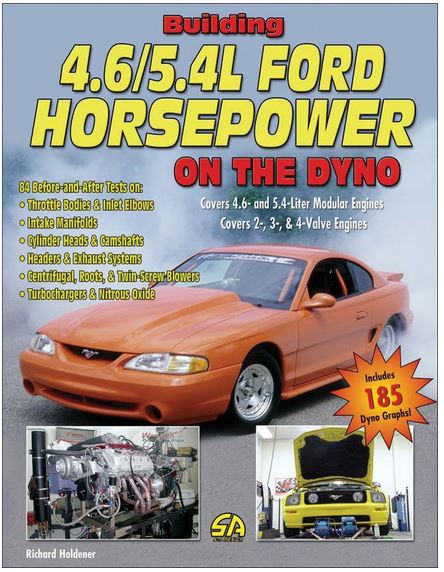
The 4.6- and 5.4-liter modular Ford engines are finally catching up with the legendary 5.0L in terms of aftermarket support and performance parts availability. Having a lot of parts to choose from is great for the enthusiast, but it can also make it harder to figure out what parts and modifications will work best. Building 4.6/5.4L Ford Horsepower on the Dyno takes the guesswork out of modification and parts selection by showing you the types of horsepower and torque gains expected by each modification.
Author Richard Holdener uses over 340 photos and 185 back-to-back dyno graphs to show you which parts increase horsepower and torque, and which parts don’t deliver on their promises. Unlike sources that only give you peak numbers and gains, Building 4.6/5.4L Ford Horsepower on the Dyno includes complete before-and-after dyno graphs, so you can see where in the RPM range these parts make (or lose) the most horsepower and torque. Holdener covers upgrades for 2-, 3-, and 4-valve modular engines, with chapters on throttle bodies and inlet elbows, intake manifolds, cylinder heads, camshafts, nitrous oxide, supercharging, turbocharging, headers, exhaust systems, and complete engine buildups.


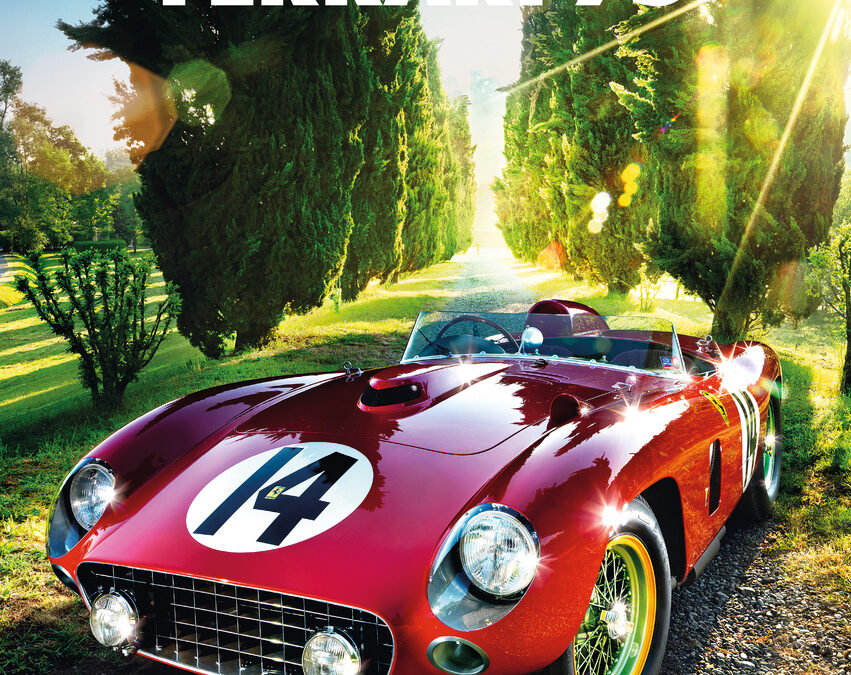
Seventy-five years of the legendary Italian-made Ferrari motor and racing car, captured in photographs by Günther Raupp, who during the course of his career has taken pictures of almost every Ferrari ever built.
The results of his eye-catching style and perfect technique are more than just plain photos. They reveal the car’s soul. In this book, he chooses the images that he considers among his best, photographs that make the brand’s history come alive. Writer Jürgen Lewandowski gives an expert presentation of the history of Ferrari, from the founding by Enzo Ferrari until today.
For world-class drivers like Alberto Ascari, Juan Manuel Fangio, Alain Prost, Niki Lauda, Michael Schumacher and Sebastian Vettel, winning in a Ferrari was an outstanding experience. For many it was the crowning moment of their career. But even off the race track the sports cars from Maranello are impressive: not just the sporting qualities, but also the bodies, drawn by Italy’s best designers, including Bertone and especially Pininfarina. Günther Raupp photographs racing cars as well as road cars and makes 75 years of history of the Italian brand come alive.
Numbered limited edition of 1947 copies
Text in English and German
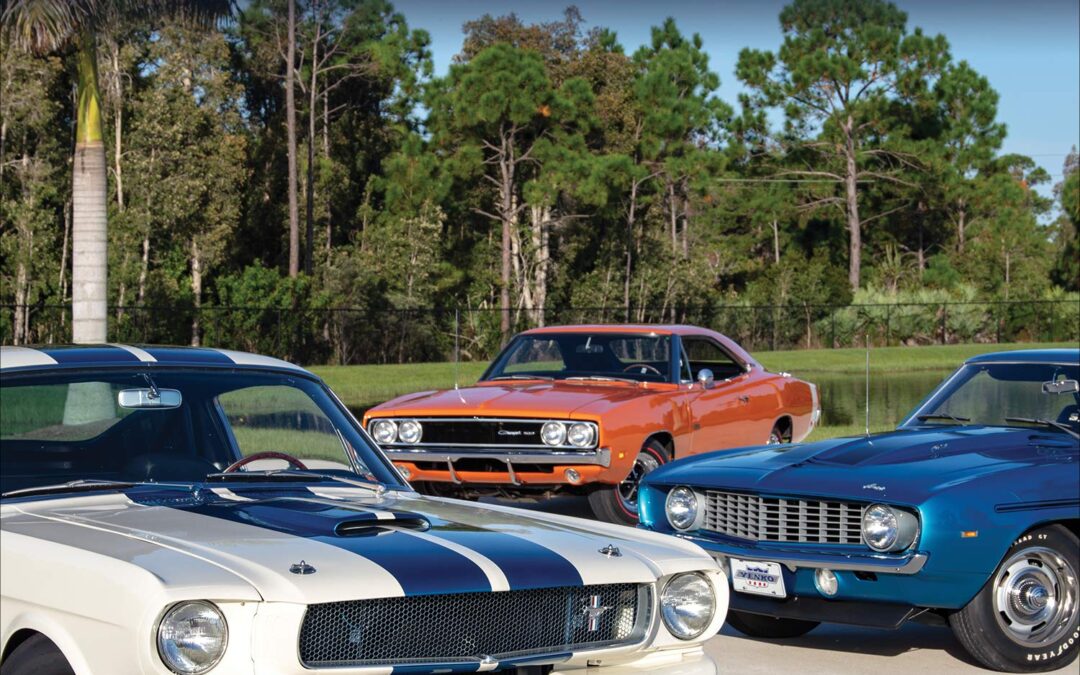
“Get one before one gets you!”
Motion Performance’s catchy sales pitch for builder Joel Rosen’s Phase III Specialty Muscle Cars sums up the escalating performance scene in the late 1960s. Special edition muscle cars were essential to keep pace. Joel and other independent car builders (such as Carroll Shelby, George Hurst, Dick Harrell, Mr. Norm, and Jim Wangers) did what the factories couldn’t do: take the muscle car and turn it into a tire-burning monster.
Although the Pontiac GTO established the muscle car category in 1964, a host of corporate safety restrictions restrained factories from offering turn-key race cars off the showroom floor. Independent car builders enhanced appearance and amplified performance in an attempt to do what the manufacturers wouldn’t. Motion Performance issued a written guarantee: Phase III cars would run 11.5 at 120 mph down the quarter-mile!
Some of the most iconic nameplates in automotive history were applied in this era with names that included Cheetah, Black Panther, Royal Bobcat, Super Hugger, Manta Ray, Super Snake, Deuce, Fast Track, and The Machine. How did manufacturers stealthily promote these special edition muscle cars as “halo cars” while pretending not to endorse them? What happened to these innovators when factories assimilated their ideas? It’s all covered inside.
Muscle car historian Duncan Brown takes us through these special edition muscle cars, their creators, and the behind-the-scenes forces that shaped these wild beasts into legends that left a lasting legacy.
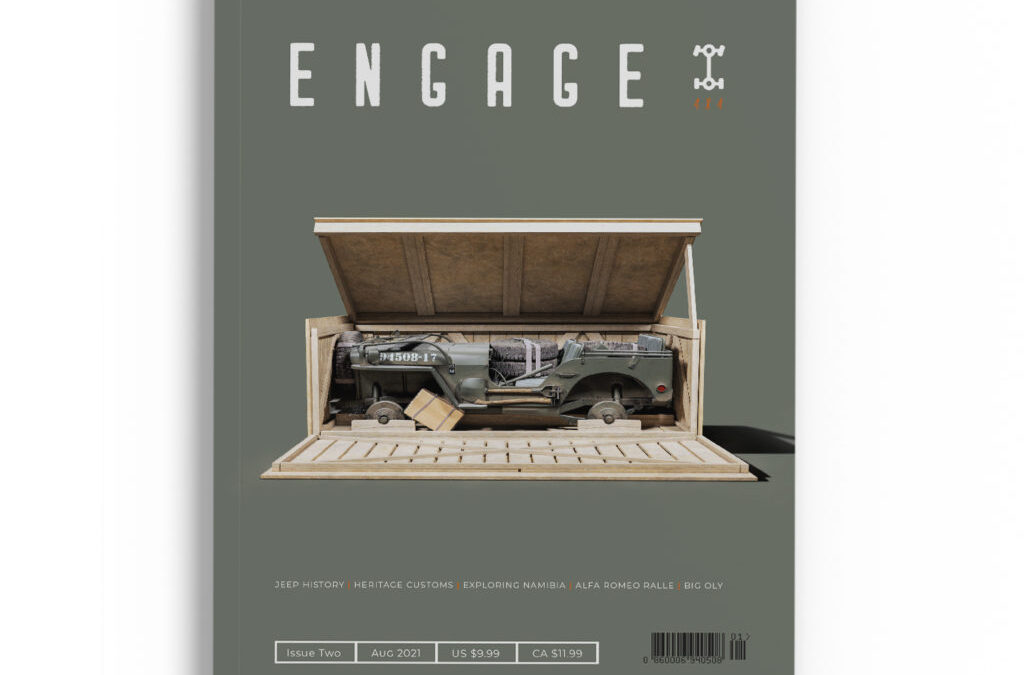

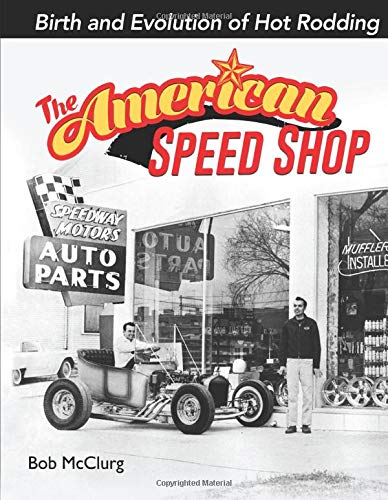
The history of hot rodding and performance cars has been well chronicled through the years. Books and magazines have covered the cars, builders, pioneers, engineers, early racers, muscle cars, street racers, etc.. Most take a nostalgic and fun look at the cars that many have loved their entire lives. Some even cover the lifestyle, the hobby as it involves people, and the effort, time, and commitment people put into it. It is more than just a hobby to most, and to many, a certain wave of nostalgia comes over them when remembering what the car scene was like “back in the day.”
The local speed shop is an important element of the nostalgic feeling that people have when fondly remembering their hot rodding youth. Speed shops were not just parts stores, they were a communal gathering place for car guys wanting to talk smart, bench race, and catch up on the local scene, as well as to solicit the expert advice from the owner or staff behind the counter.
Here, longtime hot rodder and industry veteran Bob McClurg brings you the story of the era and the culture of speed shops as told through individual shop’s histories and compelling vintage photography. He covers the birth of the industry, racing versus hot rodding, mail-order, and advertising wars. You learn about the performance boom of the 1960s and 1970s, lost speed shops as well as survivors, and a overview of the giant mail-order speed shops of today.

Relive drag racing’s dangerous past in this softcover edition of a previous best seller.
Quarter-Mile Chaos looks at the treacherous side of drag racing’s golden age. Almost 200 rare and stunning photographs from the late 1960s and early-to-mid 1970s capture terrifying fires, explosions, and crashes, all by-products on the quest to go faster. Quarter-Mile Chaos is full of up-close and personal documentation of the perilous task to reach the 1,320-foot mark first.
Armed with just a few cameras and some film, veteran drag-racing photographer Steve Reyes shot some of the most dramatic and eye-catching pictures of these quarter-mile warriors. Reyes roamed the nation’s hazardous strips in search of the perfect action photo. The result is some of the most breathtaking drag-racing imagery ever recorded, depicting out-of-control demolition and devastation during drag racing’s most entertaining era.
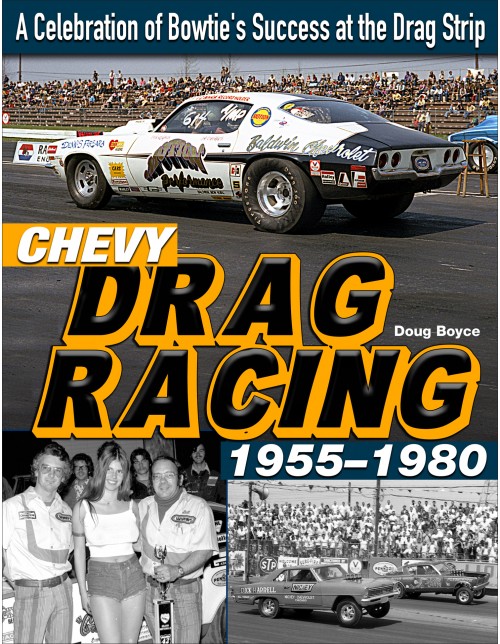
Relive the glorious first 25 years of Chevy drag racing in this comprehensive and nostalgic history.
With the introduction of Chevy’s OHV V-8 in 1955, the brand’s domination on the drag strip immediately snowballed. Drag racers loved the compact V-8. It was lightweight, revved high, and responded like no other engine previously produced. Chevy saw a record year in sales in 1955, thanks to a combination of a restyled body and the new mill. It was the age of ingenuity, and those who could get their hands on the new engine were swapping it into engine bays that once housed other weaker mills. Ford’s flathead, one that had dominated for so long, was rendered obsolete almost overnight.
Chevy had a winner and dominated the sales charts for years to come. Aftermarket manufacturers got on board and offered all the go-fast goodies needed to make Chevy a winner, no matter what category they ran. From Dragsters to Stock, Chevy’s success was immediate. And it was a long-term success, thanks to a combination of years of great styling and a vast array of driveline combinations.
Accomplished racing author Doug Boyce takes a celebratory look at those years of success, with a focus on the first 25 years (1955 through 1980). Chevrolets gave rise to such stars as Bill Grumpy Jenkins, Jungle Jim Liberman, Sneaky Pete Robinson, “Dyno Don” Nicholson, Sox & Martin, Dick Harrell, Dave Strickler, and many more. World champs and fan favorites all drove Chevys. The success showed in the record books. No brand has won more races and events or has set more national records than Chevrolet. And unlike the other manufacturers, Ford and Chrysler, it was done with little to no factory support.
Whether you are a hardcore Chevy fan or just love catching up on the history of drag racing during the golden age, this nostalgic look at Chevy racing history is sure to entertain for hours on end.
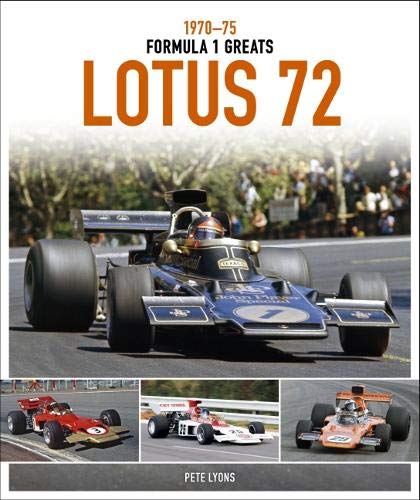
This book, the first in Evro’s new Formula 1 Greats series, covers one of the most revered Formula 1 cars ever made. Introduced in 1970, the wedge-shaped Lotus 72 competed for six seasons, winning 20 World Championship Grands Prix, two Drivers’ titles (for Jochen Rindt in 1970 and Emerson Fittipaldi in 1972) and three Constructors’ titles (in 1970, 1972 and 1973), racing first in Lotus’s evocative red, white and gold livery, then the equally eye-catching black and gold of the John Player Special period. Pete Lyons, Autosport’s renowned Formula 1 reporter for part of the Lotus 72 era, explores the car’s entire race-by-race career in his insightful commentary accompanying a magnificent array of more than 300 photos.
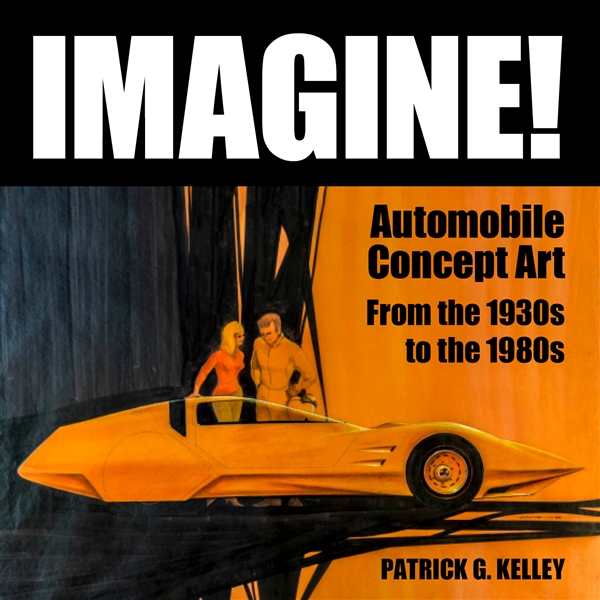
The golden age of American automobile design is universally considered to be from the 1940s to the early 1970s, an innovative period for the country’s automobile manufacturers and for the artists who designed and styled the cars of the future. The goal was to sell more cars primarily by employing artists to create vehicles with ‘eye appeal’ for the buying public. There were many thousands of drawings of these futuristic models, but almost all have been lost or purposely destroyed by the manufacturers to minimize copying. The eye-catching images shown in this book have been gathered together over the last 15 years and now form part of The Kelley Collection. They are rare survivors and illustrate the work of the men and woman who drew and designed the cars from their early days at art school and during their employment with the ‘Big Three’ automobile manufacturers. These artists have been almost forgotten and this book honors them for their contributions and imagination. The reader is taken back to earlier times when the sky was the limit, dreams and vision were encouraged and restrictions were few. 87 individual artists are represented here with 235 wonderfully unique images.

Although the phrase “trailer trash” is catchy and kitschy in describing mobile home living, this revealing peek into a stereotype that has dogged the mobile home since its earliest days challenges that label and defends the honor of the trailer home. Via nearly 400 colorful and fun images―including 300 postcards, home advertising, emblems, newspaper articles, memorabilia, and other items of interest―the novel point is made: the mobile home most assuredly deserves greater respect. Ten chapters explore features of mobile home living ― from the history, residential parks and amenities, and mobile mansions to interior and exterior designs, and the people who live in them. So, keep an open mind. You may come away with a new attitude about the mobile home.

This eye-catching book tells the story of World Championship motorcycle racing with particular emphasis on the past 25 years and the role of Dorna, the international sports management and marketing group. Spain-based Dorna became involved in motorcycle racing in 1992 and set about stabilising the ailing World Championship, which had run since 1949, and introducing a new era of direction and harmony, and of sporting and commercial success. The effect of Dorna’s efforts is abundantly apparent in the present-day stature of MotoGP throughout the world. In this book the world’s best motorcycle-racing authors tell the entire story – of the racing itself and the Dorna backdrop to it – of those 25 years in a lively style that will appeal not only to those involved professionally in the sport but also its millions of fans world-wide. * The Dorna story, written by Dennis Noyes, is a remarkable behind-the-scenes insight, especially into those early days embracing the FIM (Federation Internationale de Motocyclisme), IRTA (International Road Racing Teams Association) and MSMA (Motorcycle Sport Manufacturers Association). The stories of the battles, the money and the involvement of Bernie Ecclestone are brilliantly divulged by the key players. * The 25-year period from 1992 to 2016 is divided into five main chapters about the sport, each written by a leading journalist. * The sporting chapters each cover a five-year period, as follows, with the first World Champion of each period named: Wayne Rainey (1992-1996), Mick Doohan (1997-2001), Valentino Rossi (2002-2006), Casey Stoner (2007-2011) and Jorge Lorenzo (2012-2017). * A section called `Battles and battlegrounds’ relives some of the greatest moments of the past 25 years. * Important national stories also have their own chapters, covering the history of racing in Britain, Spain, Japan, Italy, the United States, Australia, Germany and France. * Technical perspective comes from renowned technical writer Kevin Cameron.

here’s so much more to car design than simply looking good. Speed Read: Car Design beaks down every element a team accounts for when designing vehicles.
People have never been more broadly aware of design as a concept and how it fits into their everyday lives. Even the simplest of consumer products compete to offer something that will better catch the public’s eye and reflect the taste and perceived lifestyle of each individual.
Like all design, car design is complex subject. It’s one in which many people have an interest–and not just gearheads. Every part of a car represents myriad decisions by the design team ruled by engineering, aesthetics, human interface, and emotion. Speed Read: Car Design helps the reader understand the hows and whys of that design process, offering an engaging review of history, theory, key concepts, and key designers. It’s a book for car enthusiasts, design fans, and anyone with a desire to better understand why our wheeled world looks the way it does.

in 1966, Fiat introduced the 124 Spider and, in the space of 50 years, in 2016 proposed the same model revised with current stylistic and technical standards.
In 1966, the Fiat 124 Sport Spider burst strongly into the sports car market with a very elegant line and the world’s first twin-cam engine driven by a toothed belt. Private drivers immediately appreciate the great road qualities and employ it both in speed racing and in rallies. In 1970 the private Alcide Paganelli and Ninni Russo won the Italian Rally Championship; in 1972 the private Lele Pinto and Gino Macaluso, assisted by the House, conquered the Central European Championship (Mitropa Cup). In the same year the Abarth prepares the absolute weapon for the Squadra Corse, which becomes official. In three years of rallying at the highest level the Fiat Abarth 124 Rally enters the legend catching numerous statements and winning the European Championship in 1975 and the Italian Rally Championship in 1974 and 1975. In 2016 the model long regretted by fans returns in a guise all new, very modern and technological, which in any case draws from the great tradition of the past. The book tells the evolution of the 124 Sport Spider in the various displacements and the 124 Abarth Rally and summarizes in seven chapters their competitive events. Finally, it follows the genesis of the new Abarth 124 from design to competitive debut. The texts are supported by over 300 current and current images, many of which are unpublished, detailed technical data sheets, lists of “racing” plates and other documents important for the knowledge and correct conservation of the models.
The authors Elvio Deganello and Roberto Valentini have divided the competences: Deganello – besides being a respected journalist, a competent ASI technical commissioner – has oversaw the historical part; Valentini, who had the opportunity to follow step by step the development of the 2016 model, tells about this exciting new adventure in the world of rallies. The photographs of the Actualfoto archive are essential, allowing to relive the competitions of the past.
Important is the role of Ruben Wainberg, designer of today’s Abarth 124, who has worked on this book with passion, devoting himself to his graphic design, in collaboration with Patrizia Bisa, art director of La Manovella magazine. To follow the chapter of the stylistic transition between the old and the new Fiat 124 model, which is due to the clever pen and inventiveness of Roberto Giolito, already author of a cult model like the new 500. Today Giolito is responsible for the Heritage sector of FCA and therefore represents the relationship between the great history of the brands that are part of the group and its present.
Text in English and Italian

“When I was a young boy and saw the Opel GT, I knew: When I grow up, I must have this car. My wish came true.” So says Opel manager Karl-Thomas Neumann in his preface. Bob Lutz, the living automobile legend, an 84-year-old combat jet pilot who, as a young marketing director at Opel, played a substantial role in starting the GT series, praises the GT: “The GT has a lot in common with my Alpha Jet. It is not very comfortable, has weak air-conditioning, the boot is almost non existent. But that is irrelevant. One hour in the Jet or GT – and you feel just happy. Almost younger.”
Kapitän, Admiral, Diplomat, Manta, Monza – many Opels have illustrious names and thrilling designs. But there is just one true legend of the brand with the flash: the GT. For generations of drivers the sports coupé is an eye-catcher, milestone, cult, and dream. It is regarded as the most sensational Opel ever – it sets an example for today’s models especially the GT Concept, which premiered at the Geneva International Motor Show in March 2016.
Authors Harald Hamprecht and Jens Cooper tell gripping stories about fans of the Opel GT from all over the world, from the USA to Italy to Australia. Both GT drivers, the authors combed the corporation’s archive, searched for contemporary sources, and spent uncountable hours with experts, fans, and those who played a crucial role in the GT’s development to create this – the ultimate guide to a remarkable car.

Discover what made the 1969 Chevrolet Camaro SS a performance legend and examine the muscle car’s storied components, including the 396-ci and COPO 427 engines.
Author and muscle car expert Bobby Kimbrough delves into the design, manufacturing, and equipment of Chevrolet’s premier pony car in Volume No. 4 of CarTech’s In Detail series.
For the first time in its history, the 1969 Camaro SS had a full slate of high-performance small-blocks as well as big-blocks to conquer the competition on the street and track. The engines included several iterations of the 350 and 396. In addition, the ultimate big-block Camaro, the COPO 427, is profiled. In 1969, the Camaro with the SS package took performance and styling to another level. First, the Camaro carried updated sheet metal for an aggressive and eye-catching appearance, and the ultra-high-performance 427 big-block engines were available for the first time. As history proved, 1969 was the pinnacle of performance and styling for the first-generation Chevy Camaro.
All In Detail series books include an introduction and historical overview, an explanation of the design and concepts involved in creating the car, a look at marketing and promotion, and an in-depth study of all hardware and available options, as well as an examination of where the car is on the market today. Also included is an appendix of paint and option codes, VIN and build-tag decoders, as well as production numbers.

Very few motorcycles have carved a mark in history like the Vincent V-twin, from its arrival in 1946 and up to the present day. On the road, in club racing, in drag races, or competing for land speed records, it dominated the motorcycle world, leading to the famous catchphrase coined by the factory: “The World’s Fastest Standard Motorcycle.” It was a FACT – NOT a slogan. Images such as that of Rollie Free, in swimming trunks, laying flat on his works-modified Black Shadow and taking the American motorcycle land speed record at Bonneville in 1948, have now passed into posterity. In fact, the big Vincent was so ahead of its time, that it continued to compete successfully – almost arrogantly – in racing until the mid-1970s, against modern bikes. No other motorcycle in the world can claim this kind of achievement.
Following the premature ending of Vincent production, Fritz Egli’s 1967 Egli-Vincent was the first chassis completely redesigned for a Vincent in 21 years. Egli’s machine inspired numerous builders for several generations and this book traces, holistically, the story of all those motorcycles in the broad context of the classic and modern history of the Vincent.
Understand how the flame of passion still burns brightly today.